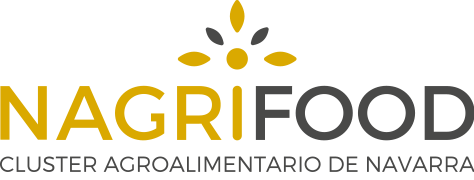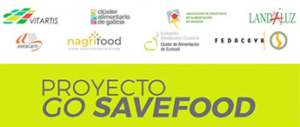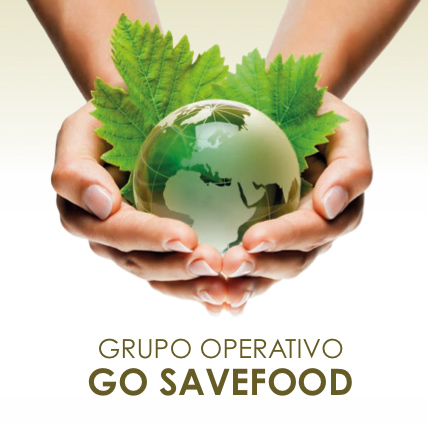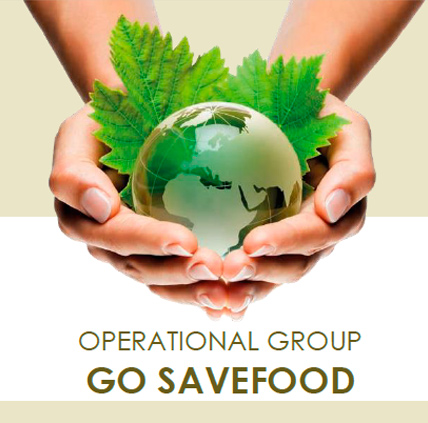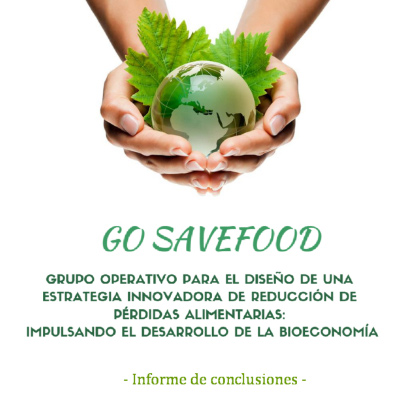Go Savefood Project
There are eight associations and clusters from the Food Industry in diverse Autonomous Communities involved within this project, all seeking to collaborate with their agrifood businesses in analysing the current situation of Food Waste within the Food Industry, and to establish action and collaboration measures to minimise it.
The entities participating in this project are:
- ASOCIACIÓN DE LA INDUSTRIA ALIMENTARIA DE CASTILLA Y LEÓN – VITARTIS
- AEI CLÚSTER ALIMENTARIO DE GALICIA (CLUSAGA)
- ASOCIACIÓN DE INDUSTRIAS DE ALIMENTACIÓN DE ARAGÓN – AIAA
- ASOCIACIÓN EMPRESARIAL DE ALIMENTOS DE ANDALUCÍA – LANDALUZ
- ASOCIACIÓN EMPRESARIAL DE INDUSTRIAS ALIMENTARIAS DE LA COMUNIDAD DE
- MADRID – ASEACAM
- CLUSTER AGROALIMENTARIO DE NAVARRA – NAGRIFOOD
- CLUSTER DE ALIMENTACIÓN DE EUSKADI
- FEDERACIÓN EMPRESARIAL DE AGROALIMENTACIÓN DE LA COMUNIDAD VALENCIANA
- FEDACOVA
This project aimed to establish strategies and to strengthen the deployment of specific actions by the Agrifood Industries to significantly reduce food waste, to achieve better mid and long-term use of resources, and to make a positive impact in terms of the agrifood chain sustainability.
To achieve these targets, the following specific objectives were proposed:
- Find out – in as much detail as possible – the amount, type and characteristics of food waste in food companies that are partners of the Task Force members, as well as strategies to reduce their current levels of waste.
- Identify the types of waste in each production subsector, and establish whether or not they are avoidable depending on applicable regulations, available technology, market demands, and detect potential areas within the production process where this waste can be reduced.
- Gather information regarding strategies and management alternatives, good practices and success stories in managing wasted food, and provide the food companies with this information in a drawn up and ordered format so they can implement preventive or corrective actions and therefore achieve effective implication of the private sector.
- Establish priorities for specific future studies: to obtain higher-value added products from unavoidable waste generated in a specific subsector…
- Raise awareness in food companies, in the sector as a whole and among the general public, about the responsibility at each stage of the chain to improve food waste management.
CONCLUSIONS
The following conclusions have been drawn from the final study carried out in over one hundred industries, within the framework of the work carried out by the Task Force Go Savefood:
- 56% of the companies highlight that the most losses arise during internal handling and processing (mechanical, thermal, biological, etc.).
- In the analysis linked to the finished product, 62% ensure that the largest amount of losses occur through returns to distributors. Breakages and product expiry are also among the most frequent causes.
This work highlights that despite losses also occurring during manufacturing, they have reduced considerably in recent years thanks to the optimisation and digitalisation of the food industry’s production processes. According to figures from the FAO, in the European Union alone an average of 173 kilos of food are wasted per citizen each year. In the supply chain, from the producer to the distributor passing through the industry, globally up to a third of food destined for human consumption could be lost.
Animal food
The waste generated upon receiving raw materials, in transforming them and during the external handling process and storage, is destined mainly for animal food, though some is also refuse and discards. The discards channel opens up a door to research and to developing solutions for reuse.
